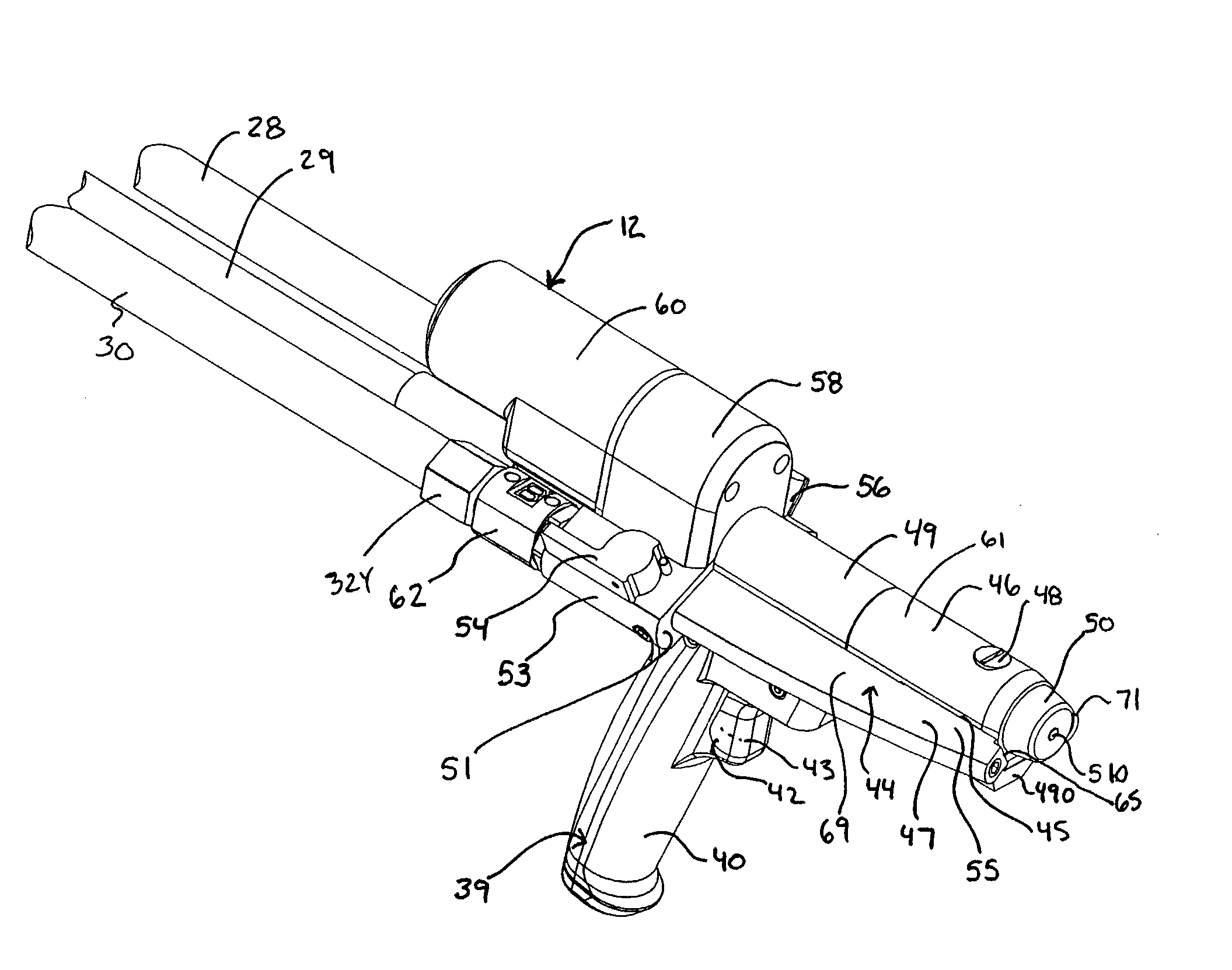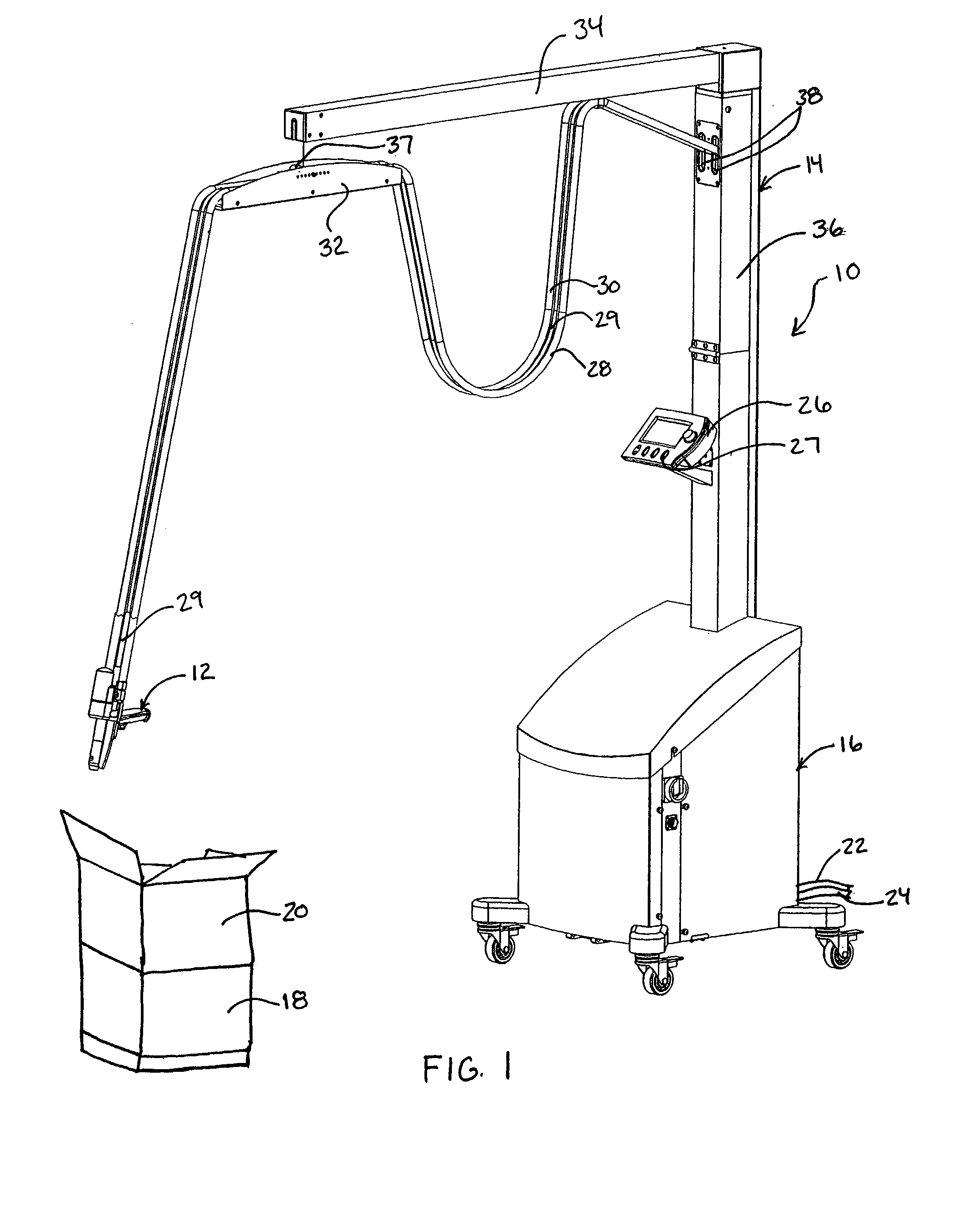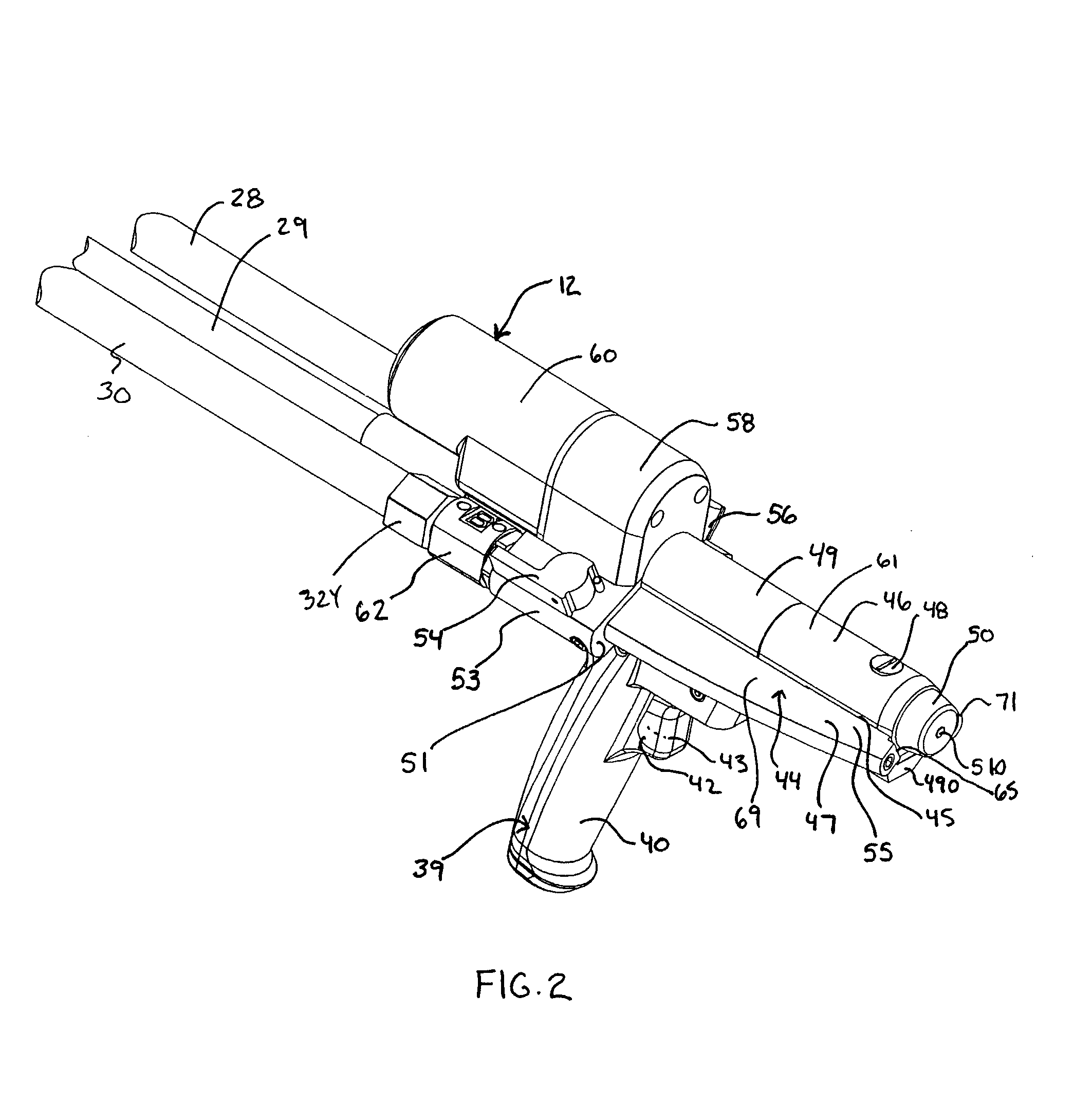Hand held dispenser
a dispenser and hand-held technology, applied in the field of material dispensers, can solve the problems of affecting the quality of materials, so as to reduce the risk of damage, and minimize the effect of downtim
- Summary
- Abstract
- Description
- Claims
- Application Information
AI Technical Summary
Benefits of technology
Problems solved by technology
Method used
Image
Examples
Embodiment Construction
[0109]The following disclosure describes various renderings of preferred embodiments of a dispenser system and hand held dispenser which are featured under the subject mater of the present invention.
[0110]FIG. 1 shows dispenser system 10 with hand held dispenser 12, means for supporting the hand held dispenser 14 and base unit 16. In the illustrated embodiment, base unit 16 provides a housing for components of the supply means for providing a supply of dispenser material to the hand held dispenser. For example, base unit 16 houses a pump system as in a pair of “in-line” pump assemblies such as the gerotor pumps exemplified in PCT publication WO 2004 / 101245 to Intellipack of Tulsa Okla., USA. These pumps (not shown) receive foam precursor chemical from chemical source lines 22, 24 feeding into base unit 16 and connected at origination end to chemical A and chemical B sources as in chemical drums or larger containers. Various other chemical feed systems for feeding chemical to, from a...
PUM
| Property | Measurement | Unit |
|---|---|---|
| pitch angle | aaaaa | aaaaa |
| pitch angle | aaaaa | aaaaa |
| length | aaaaa | aaaaa |
Abstract
Description
Claims
Application Information
 Login to View More
Login to View More - R&D
- Intellectual Property
- Life Sciences
- Materials
- Tech Scout
- Unparalleled Data Quality
- Higher Quality Content
- 60% Fewer Hallucinations
Browse by: Latest US Patents, China's latest patents, Technical Efficacy Thesaurus, Application Domain, Technology Topic, Popular Technical Reports.
© 2025 PatSnap. All rights reserved.Legal|Privacy policy|Modern Slavery Act Transparency Statement|Sitemap|About US| Contact US: help@patsnap.com



